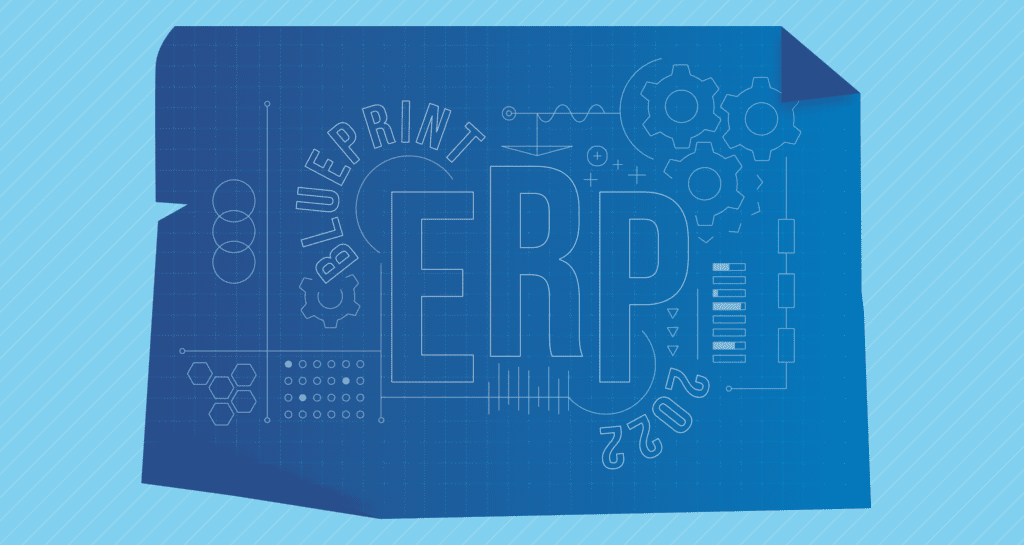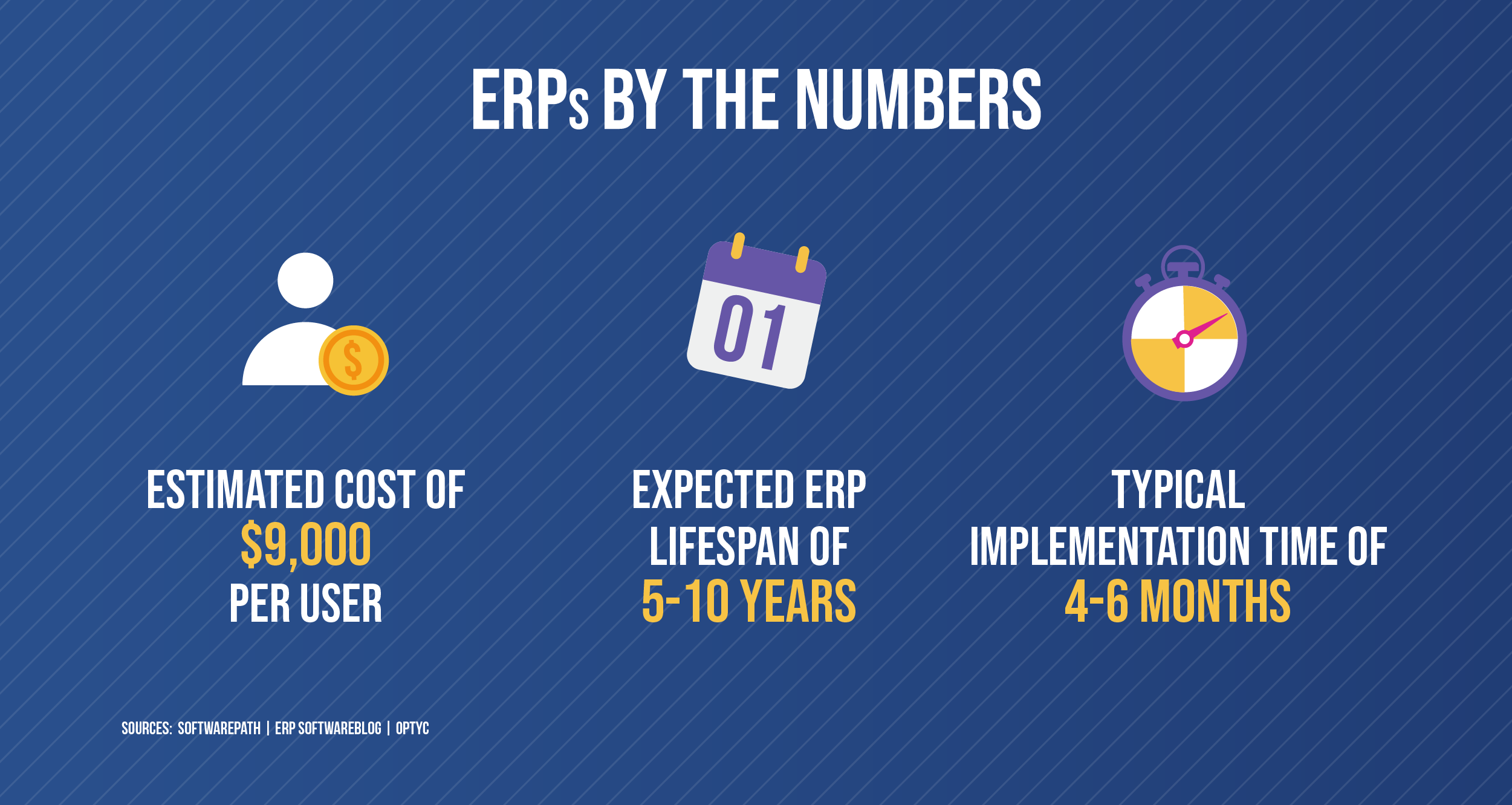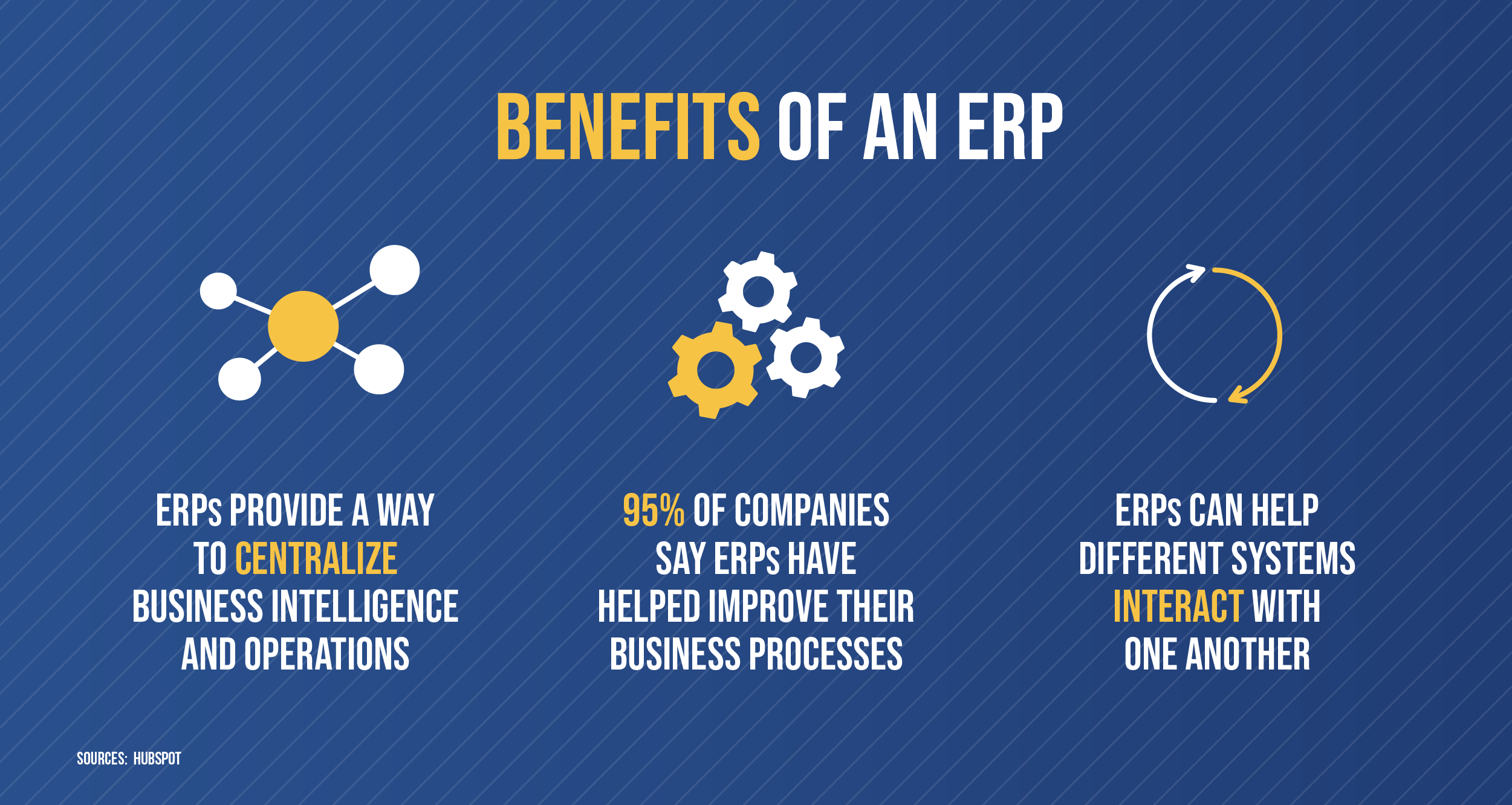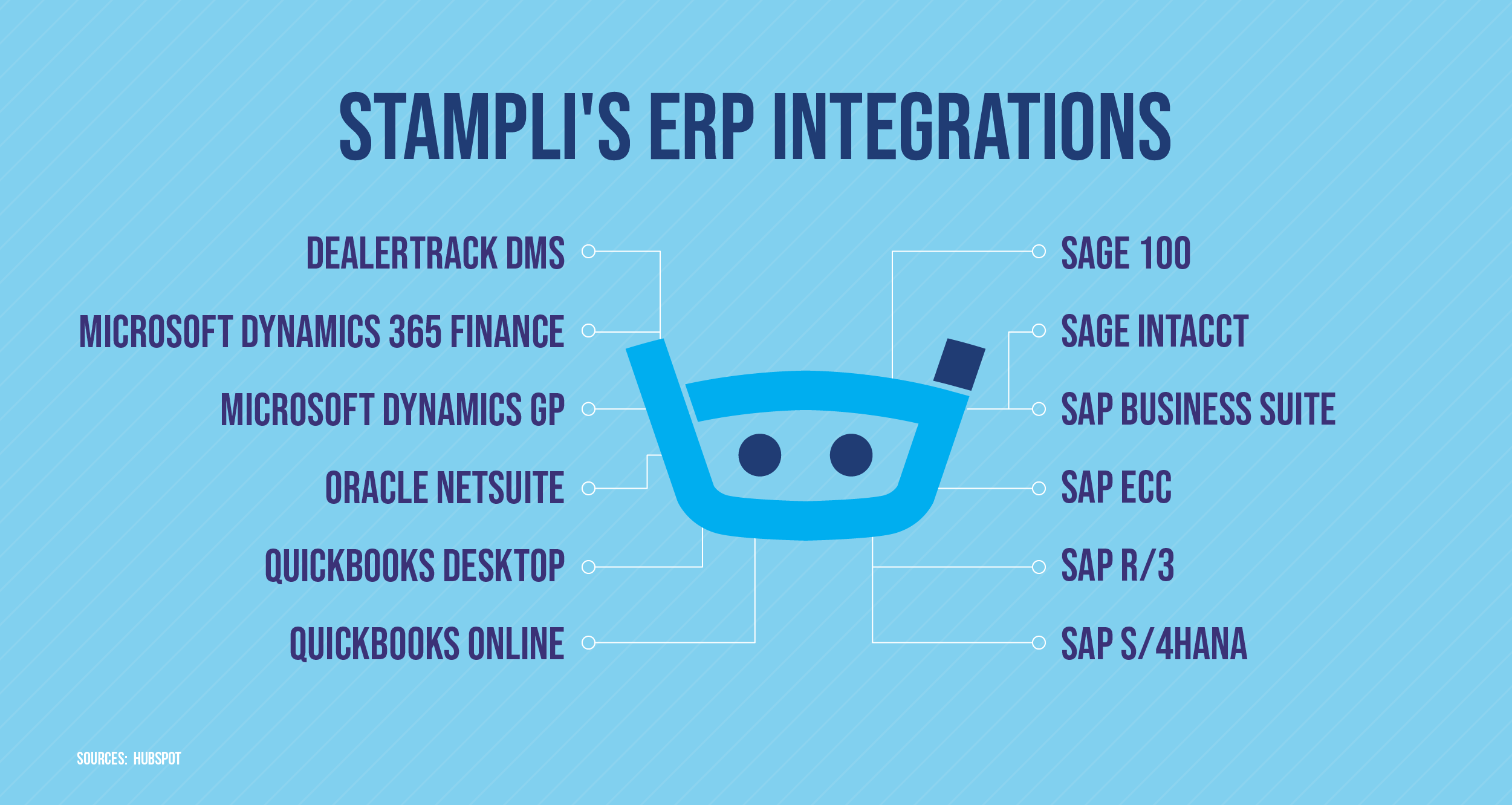ERP System Implementation: Your Blueprint for 2022

Things were coming into focus in early 2021 for Manatee County School District’s disastrous ERP launch.
A superintendent had won project approval in 2016 by promising the system would cost under $10 million. By late 2018, the cost was over $24 million – and that wasn’t the only issue. “The ERP system was meant to replace outdated software and improve operations throughout the district, including payroll, human resources and purchasing,” a Bradenton Herald reporter noted on Feb. 25, 2021. “Instead, the software launched with a host of errors.”
ERP, or enterprise resource planning systems, are becoming more common in business, with the global market for ERPs expected to top $78 billion by 2026. With this, though, comes a range of considerations for businesses to ensure a successful ERP implementation. Planning is the key to any large business initiative. In this podcast interview, Rachita Sundar, SVP of Finance at Hubspot, explains in detail how planning helps her manage a large organization.
Today, we’ll explore the basics of ERP systems and what businesses should do ahead of a system launch. We’ll also look at why it’s smart to include solutions like Stampli’s AP automation platform in the implementation.
Basics of ERP System Implementation
Think of an ERP platform like a central nervous system for businesses. It’s probably not for everyone, such as freelancers, mom-and-pop businesses, or other small firms. But many types of mid-size and enterprise-level companies might depend on having well-functioning ERP systems to assist their personnel with a variety of duties.
A manufacturing concern might rely on its ERP solution to know that its supply chain is healthy and can provide the raw goods it needs to make its products. Other businesses might use their ERPs to handle accounting or interact with customers (though it’s important to note that ERP software is not necessarily CRM software such as Salesforce and vice versa.)
However a company is configuring and using its ERP system, it can be vital for business needs, with Investopedia noting that many ERP platforms “are critical to companies because they help them implement resource planning by integrating all the processes needed to run their companies with a single system.”
As one of the major ERP systems, Microsoft Dynamics notes, the platforms also help prevent data from being siloed, with data reliability and the ability to collaborate both increasingly important parts of business requirements.
Assessing the Different Options for ERP Software
There’s no shortage of ERP providers on the market. While a successful implementation isn’t just about finding a perfect vendor, it’s good to know who’s out there. This way, companies can choose carefully to find an ERP provider who works best for their sector or price point.
With all of that in mind, here are four of the most well-known ERP providers:
- Microsoft Dynamics 365: Microsoft offers a SaaS-based ERP platform for mid-size and enterprise-level clients and another ERP system, also SaaS-based for small or midsize clients. Microsoft’s ERP offerings appear to have been well-received, averaging 4.3 stars through 95 reviews on Gartner and with one five-star reviewer in February 2022 saying, “Microsoft Dynamics 365 has been the core platform to drive our digital transformation.”
- Sage Intacct: Originally a Silicon Valley company known as Intacct Corporation and purchased by The Sage Group in 2017, Sage Intacct can perform a wide array of accounting-related functions today. It averages 4.4 stars through 407 Gartner reviews, with one reviewer in July 2022 calling Sage Intacct “a very easy tool to navigate.”
- SAP: Another highly-rated ERP solution, SAP’s platform is averaging 4.2 stars through 96 Gartner reviews. One reviewer praised how its modules integrate as well as how transactions are defined.
- Oracle NetSuite: Software giant Oracle purchased NetSuite in 2016, acquiring a fine ERP platform for small and mid-sized businesses. Today, Oracle NetSuite’s ERP averages 4.1 stars through 94 reviews on Gartner, with one reviewer noting, “Being a cloud-hosted system makes maintenance and support much easier. It allows for a lot of customization for our needs, so it can grow with you as your business scales.”
Considerations When Choosing an ERP System

There are many considerations to juggle when choosing an ERP system. The first of these is the cost involved. In short, an ERP system is a sizable investment, costing an estimated $9,000 per user and easily able to cost hundreds of thousands or even millions of dollars all told. This means a company will likely have an ERP system for many years, with the average ERP lifespan expected to be 5-10 years. It also means ERP implementation failure can be especially costly.
Even before a business lays out the dollars needed to purchase the right ERP for its needs or forecasts how many years it hopes to get out of its system, companies will want to think about the full length of the ERP implementation life cycle – typically 4-6 months, though it can easily go longer. They’ll want to consider whether they want the ERP to be SaaS-based, in the cloud, or on-premises. And they’ll want a clear user acceptance plan for their personnel. User training matters, as does a focus on change management.
5 Things For Businesses to do Ahead of an ERP Launch
Once businesses know a few basics about ERP systems, it’s time to start planning for a launch. Here are five things to do during this phase of the project.
1. Assess Your Current System
As we noted earlier, once a company has an ERP system, they typically have it for the long haul. Perhaps your company had a proprietary system designed 15-20 years ago that your IT department has patched up as many times as it can, but that finally must be replaced.
There’s also the possibility that a company might insist it has an ERP system even if that’s not really the case. While there’s definitely some thought around the merits of integrating ERP and CRM systems, some companies merely use CRM platforms like an ERP. However, a CRM is not built for the same purpose as an ERP.
Key takeaway: Whatever a company might or might not have for an ERP system, it’s wise to have a clear idea of what it is and how it can be improved upon. If a system is aging, it might not handle data as well as a newer ERP platform. And if it’s not really an ERP system, chances are a company is missing out on many of the functions actual ERP platforms can perform.
2. Don’t Try to Find the Perfect Vendor
There are a lot of fine ERP vendors out there and maybe an ideal one for every ERP implementation, depending on the particulars of the company buying the system.
All the same, focusing too much during the selection process on locating the perfect vendor can extend the process far longer than it should. It can delay getting a new system into place and consume staff time and resources at a point of economic uncertainty.
A protracted ERP selection process is also unnecessary in that other concerns should take precedence. A good ERP implementation process is less about finding a technological silver bullet than it is about laying the groundwork to get a new system up and running.
Key takeaway: While it’s wise to do proper due diligence during the ERP selection process, spending too much time can create diminishing returns.
3. Be Prepared to See the Implementation Process Through

An ERP system probably won’t be something that gets bought one day and implemented the next. A successful implementation of an ERP platform will likely have multiple implementation phases, involving many stakeholders. The implementation requires both a willingness to update outdated policies and technology and the wherewithal to see the process through.
The good news is that ERP implementation is a finite process and once it’s done, companies can reap the benefits. As an example, in August 2022 PYMNTS.com noted that a solid 95% of companies that had put ERPs in place found they’d improved their business processes.
Key takeaway: ERP implementation isn’t necessarily fast, but it can definitely be worth it.
4. Have a Clear Idea on What Systems and Departments Are Involved
Depending on the type of company purchasing an ERP system and the vendor it chooses, different departments and existing systems within those areas of the business might factor into the implementation team and rollout.
At the very least, a company’s finance or accounts payable departments will probably need to weigh in, with team members such as the CFO or AP director having valuable insight for the process. Staff that oversees manufacturing or production, such as operations or project management, should also be on the implementation team at an early stage.
In terms of systems, a company will want to assess how many of them will work smoothly with the new ERP as possible. Ideally, as few systems as possible will be incompatible.
Key takeaway: Staff and systems will be impacted by the ERP. To minimize disruptions, it’s better to prepare sooner for this, with a robust project team of end-users and others and a roadmap of how existing systems will be incorporated.
5. Consider Upgrading Other Systems, Such as AP, Along With the ERP
While it’s smart to try to find an ERP that will work harmoniously with existing systems, it’s also okay to take the opportunity of purchasing an ERP platform to upgrade other systems.
Truth is, many companies have outdated systems, such as whatever they’ve using to complete their accounts payable duties. A 2022 survey report by Stampli and Treasury Webinars, “Drivers of AP Success: Metrics, Collaboration, Influence” noted that just 58% of respondents said their AP departments had the data and systems needed to assess P2P (procurement-to-payment) effectiveness.
Key takeaway: Upgrading ancillary systems like AP automation platforms in conjunction with an ERP project is a cost-effective way to optimize performance of the new ERP system as soon as it reaches its go-live date. It can also streamline the implementation.
How Stampli Fits Into Your ERP System Implementation Timeline
For companies that have an ERP implementation project ready to go, here’s how Stampli can fit into your project plan and workflows.
An AP Automation Platform That Can Work with Whatever ERP You Choose

One of our major differentiators as an AP automation provider is our flexibility to work with different ERPs. Some AP automation platforms can be so limited in which ERPs they can interact with. With Stampli, companies never have to worry that they’ll be limited in which ERPs they can use, lest they have to uproot their entire accounts payable technology suite.
Bring us in if you have a new ERP up-and-running or if you think you might do a project in a few years. Wherever you might be in upgrading your ERP, we’re proud to be your implementation partner and keep the accounting side of your business running top-notch.
A Tool That Can Help Maximize Your ERP’s Performance
A company can choose the flashiest ERP system imaginable. But without the right systems connecting in with it, the ERP’s performance might lag.
Consider a company, for instance, that hasn’t modernized its accounting practices and lacks an AP automation system. Its general ledger will therefore sit within its ERP with a lack of real-time data, which in turn will create difficulties with both month-end reconciliations and companies knowing if they have accurate data from day-to-day.
Stampli, on the other hand, makes it so that data migration happens automatically between a company’s AP system and parts of its ERP like its general ledger. Use Stampli to manage multiple payment types, including ACH, and credit card payments, so you can avoid shadow spend. This will help keep the ERP running optimally and maximizing a company’s investment in a state-of-the-art system.
Maximize your ERP investment with Stampli’s AP automation system. Come see the difference.
